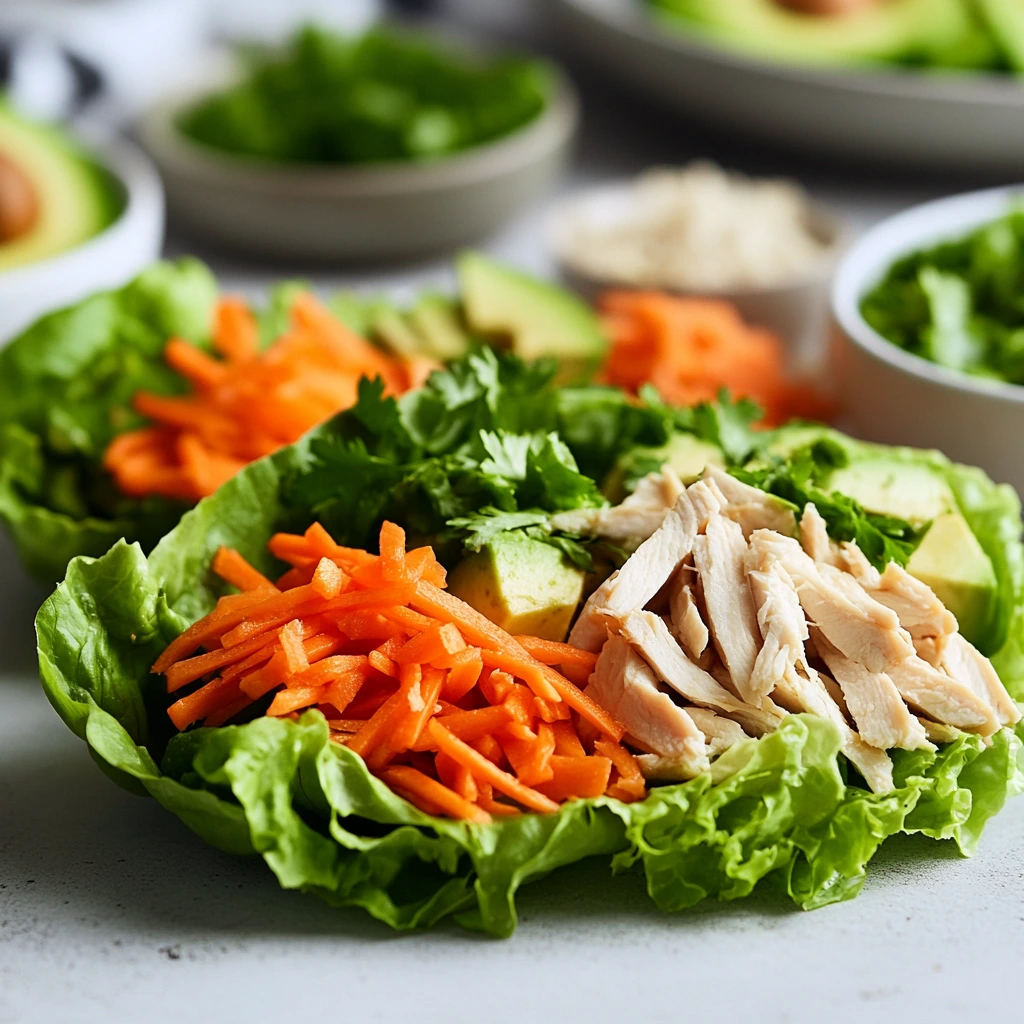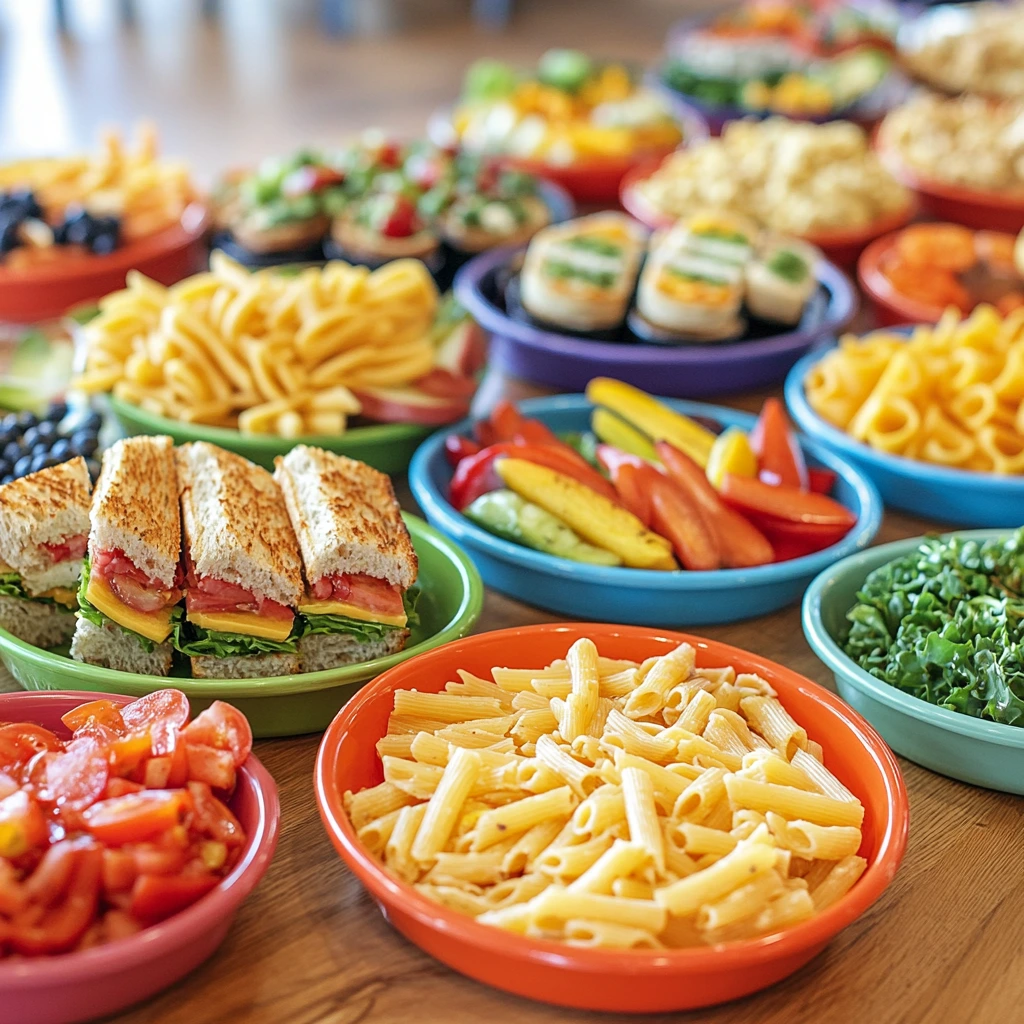Creating gluten free lunch ideas for kids is an essential task for parents whose children have gluten sensitivities or celiac disease. A gluten-free diet ensures that children stay healthy and avoid the discomfort caused by consuming gluten—a protein found in wheat, barley, and rye. However, preparing these meals comes with its own set of challenges, such as finding safe ingredients and keeping meals exciting and nutritious.
This article offers a range of creative and practical ideas for preparing gluten-free lunches for kids. From sandwich alternatives to fun snacks and hot meal options, these tips will simplify the process and make lunchtime more enjoyable for both parents and children. By exploring these options, you can ensure your child’s diet is not only safe but also balanced and delicious.
Table of Contents
1. Understanding Gluten Free Diets for Children
2.1 What is Gluten?
Gluten is a protein found in wheat, barley, and rye, and it acts as a binding agent that gives food its shape and elasticity. Common sources of gluten include bread, pasta, cereals, baked goods, and many processed foods. While gluten is harmless for most people, it can cause severe health issues for individuals with gluten-related disorders such as celiac disease or gluten sensitivity. As a result, identifying and avoiding foods that contain gluten is essential for children who require a gluten-free diet.
2.2 Reasons Children Need Gluten Free Diets
Celiac Disease
Celiac disease is an autoimmune disorder where the immune system attacks the small intestine upon gluten consumption. This leads to malabsorption of nutrients, stunted growth, and other health problems. For children with this condition, adhering to a strict gluten-free diet is non-negotiable.
Gluten Sensitivity
Unlike celiac disease, gluten sensitivity does not involve intestinal damage but can cause symptoms like bloating, fatigue, and abdominal pain. A gluten-free diet often alleviates these symptoms, helping children feel healthier and more energetic.
Other Health Considerations
Some parents choose gluten-free diets for their children due to behavioral or developmental concerns, such as autism spectrum disorder, although scientific evidence remains inconclusive. Additionally, eliminating gluten can be a part of managing other health conditions, including certain food allergies or intolerances.
2.3 Gluten Free Nutrition: Maintaining a Balanced Diet
Ensuring balanced nutrition is crucial for children on a gluten-free diet. Gluten-containing foods are often rich in essential nutrients, so eliminating them requires careful planning to prevent deficiencies. Below is a table highlighting common nutrient gaps and ways to address them:
| Nutrient | Why It’s Important | Sources in Gluten-Free Diets |
|---|---|---|
| Fiber | Promotes digestion and gut health | Fruits, vegetables, nuts, seeds, gluten-free grains (quinoa, millet) |
| Iron | Supports oxygen transport and energy | Leafy greens, legumes, gluten-free fortified cereals |
| Calcium | Essential for strong bones | Dairy, fortified non-dairy milks, leafy greens |
| Vitamin D | Aids calcium absorption | Fatty fish, egg yolks, fortified gluten-free products |
| B Vitamins | Supports energy and brain function | Gluten-free whole grains, eggs, leafy greens |
| Protein | Critical for growth and repair | Meat, fish, poultry, beans, tofu, gluten-free protein bars |
By incorporating a variety of nutrient-dense, gluten-free foods into meals, parents can ensure their children thrive while following a gluten-free lifestyle.
2. Creative and Nutritious Gluten Free Lunch Ideas for Kids
2.1 Gluten-Free Sandwich Alternatives for Kids
Traditional sandwiches can be challenging for gluten-free diets, but there are plenty of creative alternatives that are just as satisfying:
- Lettuce Wraps
Crisp lettuce leaves make an excellent substitute for bread. Fill them with turkey, chicken, or roasted vegetables, and add a gluten-free spread like hummus or guacamole for a flavorful twist. - Rice Paper Rolls
Rice paper rolls are versatile, allowing you to pack them with shredded vegetables, cooked protein, and gluten-free sauces like tamari or sweet chili. These wraps are fun to eat and easy to customize. - Gluten-Free Bread Options
There are many gluten-free bread options available in stores today. Brands offer loaves made from rice, almond, or quinoa flour. Use these breads to recreate classic sandwiches like peanut butter and jelly or ham and cheese, ensuring they remain safe and delicious for kids.

2.2 Fun and Healthy Gluten Free Snacks for Kids
Snacks are essential for keeping kids energized throughout the day. Here are some gluten-free options:
- Vegetable Sticks with Gluten-Free Dips
Carrot, celery, and cucumber sticks pair well with gluten-free dips like hummus, tzatziki, or a creamy avocado dip. These snacks are crunchy, colorful, and packed with nutrients. - Fruit Salads
A mix of fresh, seasonal fruits like berries, melon, and oranges makes for a sweet and healthy treat. Add a drizzle of honey or a sprinkle of cinnamon for extra flavor. - Gluten-Free Crackers and Cheese
Many brands now offer gluten-free crackers made from ingredients like rice, chickpeas, or almond flour. Pair these with slices of cheese or a spread for a protein-rich snack that kids will love.
2.3 Hot Gluten Free Lunch ideas for Kids
Hot lunches provide warmth and comfort, especially during cooler months. Here are some easy gluten-free options:
- Gluten-Free Pasta Dishes
Use gluten-free pasta made from rice, lentils, or chickpeas to create delicious dishes. Toss it with marinara sauce, vegetables, or a creamy gluten-free cheese sauce for a hearty meal. - Rice-Based Meals
Rice is naturally gluten-free and highly versatile. Consider fried rice with vegetables and eggs, or rice bowls topped with grilled chicken, beans, and avocado for a balanced and filling lunch. - Soups and Stews
Gluten-free soups like chicken noodle (made with gluten-free pasta) or vegetable stew are wholesome and easy to prepare in advance. Pack them in a thermos to keep them warm until lunchtime.
2.4 Involving Kids in Preparing Gluten Free Lunch
Involving children in the meal preparation process not only teaches them valuable skills but also encourages them to enjoy their food.
- Benefits of Involving Children
Kids are more likely to eat their lunches when they’ve had a hand in making them. It also helps them learn about healthy eating habits and builds their confidence in the kitchen. - Age-Appropriate Tasks
Younger children can help with simple tasks like washing fruits and vegetables, spreading dips, or assembling wraps. Older kids can assist with chopping (using kid-friendly tools), cooking rice, or packing lunches into containers. - Encouraging Kids to Choose Their Own Lunch Components
Give kids a say in their lunches by setting up a “lunch station” where they can pick their favorite fruits, vegetables, and proteins. Offer a variety of gluten-free options to make the process fun and interactive.
By including children in the preparation process, parents can create lunches that are not only gluten-free but also enjoyable and exciting for kids to eat.
3. Tips for Packing Gluten Free Lunch ideas for Kids
3.1 Preventing Cross-Contamination in Gluten Free Lunch
- Separate Tools and Equipment:
Designate specific cutting boards, knives, and utensils for gluten-free foods. Cross-contact can occur when shared tools are used for both gluten-free and gluten-containing foods. For example, a cutting board used for bread should not be reused for gluten-free sandwiches. - Store Foods Safely:
Use airtight containers or zip-lock bags to store gluten-free items separately from gluten-containing foods. This is particularly important for baked goods or snacks. Labeling containers can also help family members easily identify gluten-free options. - Designate Lunchboxes:
Keep a dedicated lunchbox or compartment for gluten-free meals. This prevents accidental mixing of foods when packing for school or trips. Insulated containers are a great option for keeping meals fresh and safe. - Mindful Baking and Cooking:
Avoid preparing gluten-containing and gluten-free meals simultaneously. Even small crumbs can contaminate gluten-free dishes. As suggested in “Is No Bake or Baked Cheesecake Better?”, ingredient separation is critical for maintaining food safety and flavor integrity.

3.2 Reading Labels to Identify Hidden Gluten in Kids’ Lunch
- Understand Common Additives:
Hidden gluten can be found in surprising ingredients, such as malt (often used in cereals), barley extract (found in some soups), and hydrolyzed wheat protein (used as a flavor enhancer in processed foods). Educate yourself about these additives to make informed choices. - Look for Certification:
Products with a “Certified Gluten-Free” label are tested to ensure they meet strict standards. This certification offers peace of mind, especially when purchasing snacks, bread, or processed items. - Double-Check Processed Foods:
Even items that seem naturally gluten-free, like sauces or dressings, may contain gluten as a thickener. Always read the label carefully. In “Philadelphia Pecan Pie Cheesecake”, the emphasis on ingredient awareness can be applied to identifying hidden gluten. - Be Cautious with Bulk Bins:
Avoid purchasing gluten-free items from bulk bins where scoops are shared with gluten-containing products, as this can lead to contamination.
3.3 Budget-Friendly Tips for Packing Gluten Free Lunch
- Focus on Affordable Staples:
Build meals around inexpensive, naturally gluten-free foods like rice, potatoes, beans, and seasonal vegetables. These items are versatile, filling, and easy to prepare. - DIY Snacks and Meals:
Prepare homemade snacks like gluten-free granola bars or energy bites to save on store-bought items. Similarly, make larger portions of gluten-free dishes and freeze them for later use. This reduces costs and ensures quick access to meals. - Get Inspired by Recipes:
Adapt budget-friendly ideas from resources like “Easy Casserole Recipes” to create cost-effective and delicious gluten-free versions. These casseroles can be packed with protein, vegetables, and gluten-free grains for a balanced meal. - Buy in Bulk (Safely):
Purchase gluten-free pantry staples like quinoa, lentils, and certified gluten-free oats in bulk when available at discounted prices. Ensure these are packaged in sealed bags to avoid contamination.
With careful planning, smart shopping, and an understanding of safety practices, you can create gluten-free lunches that are nutritious, budget-friendly, and enjoyable for your child.
4. Frequently Asked Questions About Gluten Free Lunch ideas for Kids
4.1. What are some quick gluten-free lunch ideas for busy mornings?
For busy mornings, pack simple yet nutritious options like:
- Gluten-free wraps with turkey and avocado
- Pre-made rice paper rolls with vegetables
- Gluten-free pasta salad with cherry tomatoes and cheese
- Fresh fruit with a gluten-free granola bar
These are quick to assemble and satisfying.
4.2. How can I ensure my child’s gluten-free lunch is nutritionally balanced?
Include a variety of food groups:
- Protein: Chicken, beans, or eggs
- Whole grains: Gluten-free bread or quinoa
- Fruits and vegetables: Apple slices, carrot sticks, or spinach
- Healthy fats: Avocado or nuts (if allowed)
A mix ensures adequate nutrients for growth and energy.
4.3 Are there gluten-free substitutes for common kid-favorite foods?
Yes! Some great gluten-free substitutes include:
- Gluten-free bread for sandwiches
- Rice or chickpea pasta for mac and cheese
- Gluten-free pizza crusts
- Almond or coconut flour for homemade cookies and brownies
These alternatives are tasty and widely available.
4.4. How can I help my child adapt to a gluten-free diet without feeling left out?
Involve your child in meal planning and preparation. Let them choose favorite gluten-free alternatives, like pizza or cookies. Educate teachers and friends about the diet to foster inclusivity during shared meals. Hosting gluten-free playdates can also help them feel supported.
5. Conclusion
Providing gluten-free lunches for kids may seem challenging at first; however, with the right strategies, it can quickly become an enjoyable and rewarding experience. To begin with, understanding the basics of a gluten-free diet, such as avoiding cross-contamination and ensuring nutritional balance, lays a strong foundation for success. Furthermore, incorporating creative ideas like lettuce wraps, rice-based meals, and gluten-free pasta dishes makes it easier to create appealing options. Additionally, including fun snacks and engaging kids in meal preparation ensures the process is both manageable and exciting.
Moreover, parents are encouraged to experiment with a variety of gluten-free ingredients and recipes to discover what their children enjoy the most. By involving kids in planning and preparation, not only do they feel included, but they also develop a positive attitude toward their meals.
In conclusion, a gluten-free diet doesn’t have to feel restrictive. On the contrary, with creativity and consistent planning, it can be both healthy and enjoyable, ensuring your child thrives while enjoying their meals every day.

